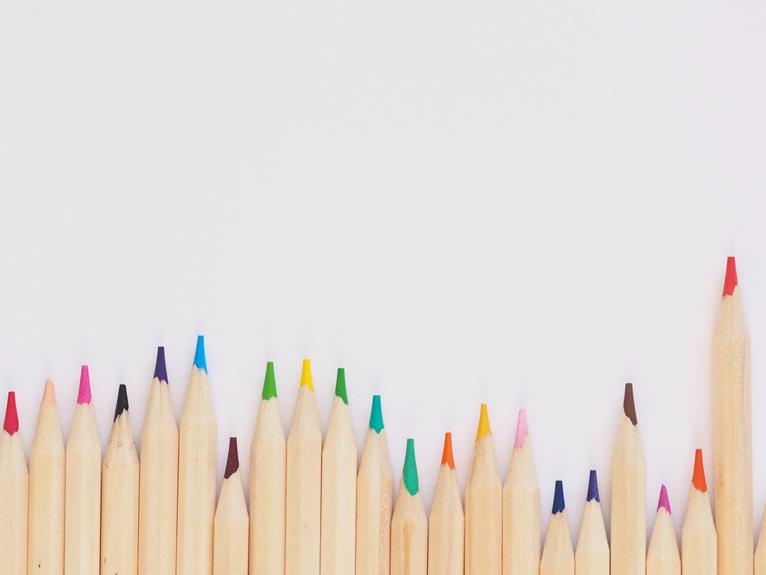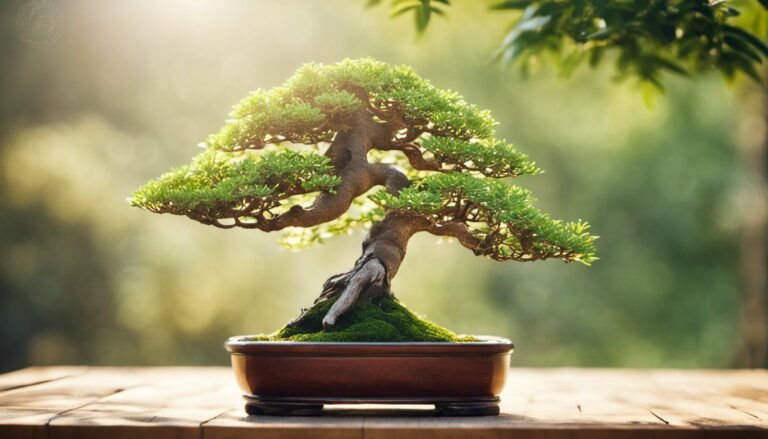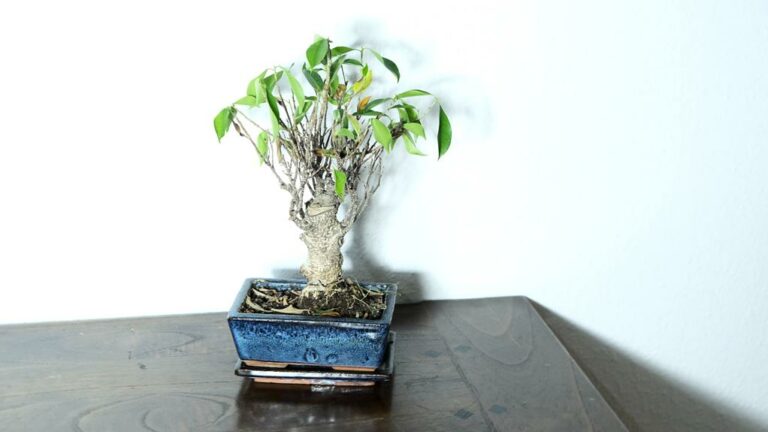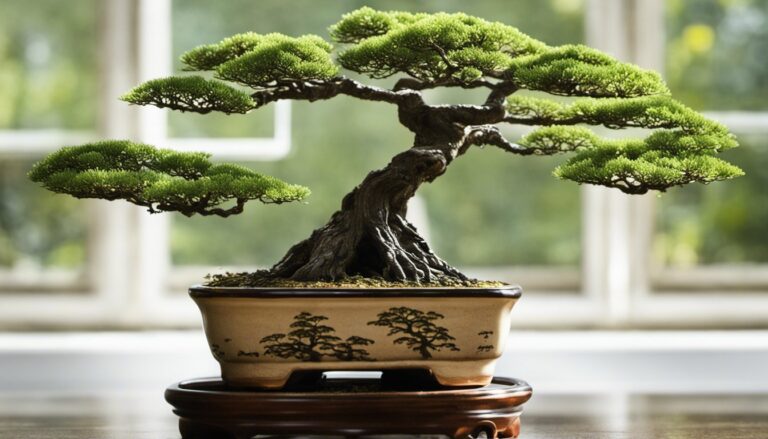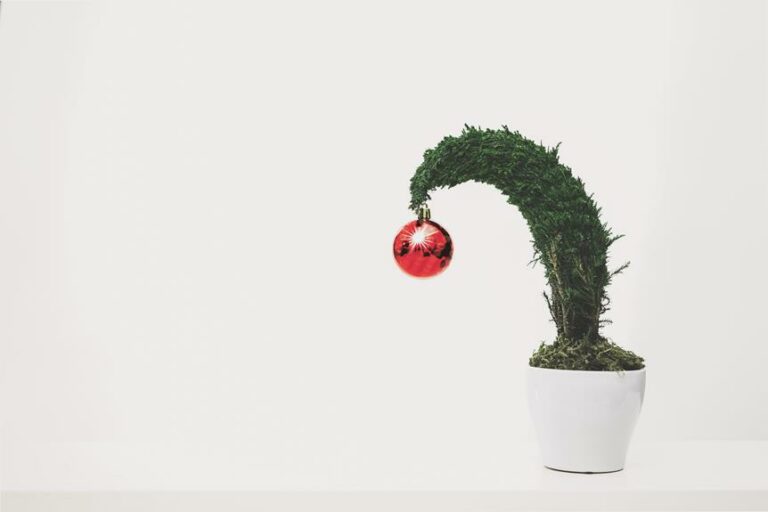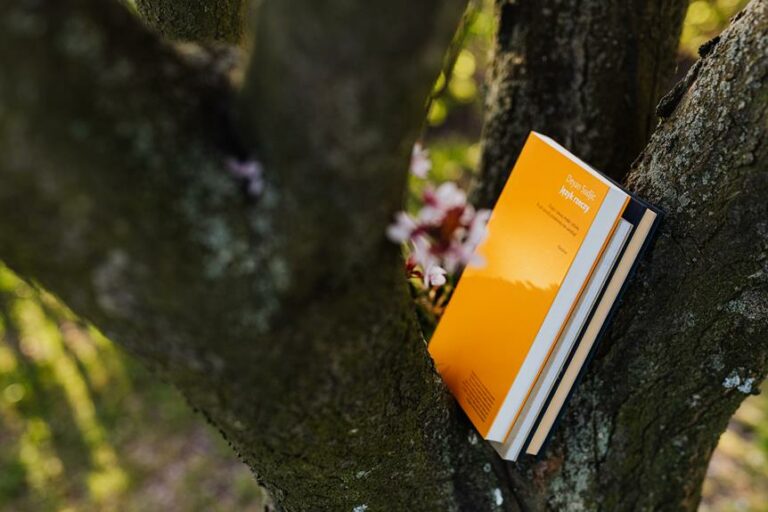Master the Art of Growing Jade Bonsai: Expert Tips for Success
Are you ready to become a master of growing jade bonsai? Look no further! In this article, we'll provide expert tips and techniques for your success. Whether you're starting from store-bought trees, cuttings, or seedlings, we'll guide you through every step.
From pot preparation to finding the perfect soil mix, we've got you covered. You'll also learn essential techniques like rooting, propagating, and proper care. We'll show you how to provide the right amount of sunlight, water, and master the art of pruning.
Plus, we'll share maintenance tips, answer common FAQs, and help you understand the best placement and fertilization practices. Get ready to create and maintain a stunning jade bonsai that will bring you joy for years to come.
Let's dive into this exciting journey together!
Key Takeaways
- Jade bonsai trees require a lot of sunlight to grow, so it's important to ensure they are placed in well-lit areas.
- When choosing the approach for growing jade bonsai, consider whether you want to buy a store-bought tree for quick styling or grow from cuttings or seedlings for a more rewarding experience.
- Use the right pot and soil mix for planting jade bonsai. A yogurt pot is a good option for cuttings and seedlings, and an inorganic soil mix with akadama, volcanic ash rock, and pumice is recommended.
- Proper care and maintenance of jade bonsai include regular watering, pruning to shape the tree, and repotting every 2 to 3 years to ensure proper growth and health.
Getting Started With Jade Bonsai
To get started with jade bonsai, you need to take a cutting of a jade branch. Find a healthy branch that's 4 to 10 inches long and 0.5 to 1 inch wide. Make a clean cut just below a leaf node using sharp, sterile pruning shears.
After taking the cutting, remove any leaves from the lower half of the branch. Place the cutting in a glass with about two inches of water, ensuring that the nodes are submerged. Keep the glass in a warm and well-lit area, but avoid direct sunlight.
Within a few weeks, roots will start to appear. Once the roots have developed, apply a root hormone to promote further root growth. Afterward, plant the cutting in a bonsai soil mix, and continue to care for it as a jade bonsai.
Choosing the Right Approach
If you're unsure about whether to choose store-bought trees or grow from cuttings or seedlings, there are a few factors to consider.
Store-bought trees save time and allow for a quick styling process. However, growing from seedlings or cuttings can provide a rewarding experience and teach you more about the art of bonsai.
When choosing cuttings, look for a primary branch connected to the trunk, preferably thicker and longer for better chances of propagation. Cuttings that are 4 to 10 inches long and 0.5 to 1 inch wide are ideal.
Bonsai seeds are commonly available from bonsai specialists, so make sure to invest in the right seedlings or cuttings for growing your jade bonsai.
Pot Preparation and Soil Mix
When preparing the pot for your jade bonsai tree, consider the type of pot and the soil mix that will best support its growth.
Pot Preparation:
- Bonsai tree pots are great for drainage but may not be suitable for new cuttings or seedlings.
- A yogurt pot is a good option for cuttings and seedlings.
- Holes need to be added to the bottom of the pot.
- The number of holes depends on the size of the tree.
- Adding a mesh on top of the holes helps with water flow and prevents insects from entering.
Soil Mix:
- Bonsai soil needs to provide aeration, water retention, and drainage.
- An inorganic soil mix with akadama, volcanic ash rock, and pumice is recommended.
- Cactus soil can be used as an organic alternative.
- The right soil mix is crucial for the health of the jade bonsai tree.
Planting and Care
After preparing the pot and soil mix for your jade bonsai tree, it's time to move on to the crucial steps of planting and caring for your bonsai.
Planting a jade bonsai cutting or seed is straightforward. Make a dip in the center of the soil and place the seed or seedling. Cover it with soil and water thoroughly. When preparing a cutting, score the base and remove the bark and cambium. Apply rooting powder containing IBA to the exposed wood and plant the cutting in the soil, ensuring it's secure. Use wire to hold the cutting in place if needed. Optionally, use root hormone solution to encourage root growth.
Once the bonsai has sprouted, gradually introduce it to sunlight. Water regularly, but be cautious of overwatering. Prune the tree to shape it and promote healthy growth. Repotting may be necessary after 2 to 3 years.
Place the jade bonsai in well-lit areas indoors, with south-facing windows being ideal. Water every two weeks in spring and summer, and reduce watering in fall and winter. Fertilize seven times during the growing season, following a proper schedule.
Maintenance and Tips
To maintain your jade bonsai tree successfully, regularly prune and fertilize it to promote healthy growth and ensure its vitality. Pruning is essential to shape the tree and maintain its desired form. Remove any dead, damaged, or overgrown branches to improve the bonsai's overall appearance.
Fertilizing is equally important to provide the necessary nutrients for the tree's growth. Use a balanced fertilizer specifically designed for bonsai trees and apply it according to the instructions on the packaging.
Additionally, ensure that your jade bonsai receives adequate sunlight, as it requires a lot of light to thrive. Avoid overwatering the tree and monitor the moisture levels in the soil to prevent root rot.
Placement, Watering, and Fertilizing
For optimal growth and health of your jade bonsai tree, it's crucial to carefully consider its placement, watering routine, and fertilization schedule.
When it comes to placement, jade bonsai thrives indoors in well-lit areas such as kitchens, offices, and living rooms. South-facing windows provide ample light for the tree. During the summer, some outdoor exposure can benefit the jade bonsai.
In terms of watering, jade bonsai should be watered every two weeks in spring and summer, and the frequency should be reduced to once every three weeks in fall and winter. It's important to ensure that the topsoil is dry before watering.
Fertilization is also essential for healthy growth. Fertilize the jade bonsai seven times during the growing season, with monthly fertilization in spring, summer, and early fall. Be cautious about over-fertilizing, as it can cause burns.
Follow this proper watering and fertilization schedule for optimal growth and vitality of your jade bonsai.
Conclusion
In conclusion, by following the expert tips and techniques provided in this article, you can confidently embark on the journey of growing your own jade bonsai.
From selecting the right approach to pot preparation, soil mix, planting, and care techniques, you'll have the knowledge and skills to create and maintain a stunning jade bonsai that will bring you joy for years to come.
So, get started and enjoy the art of growing jade bonsai!

